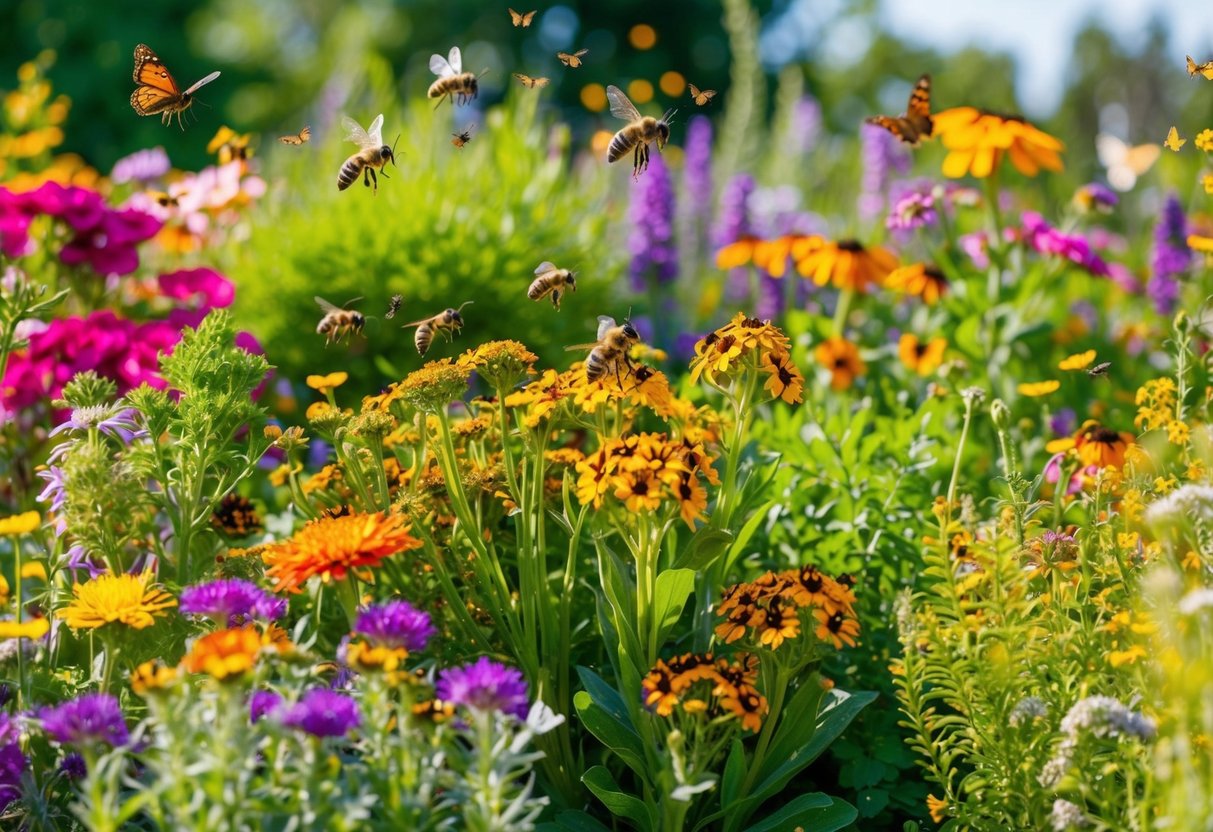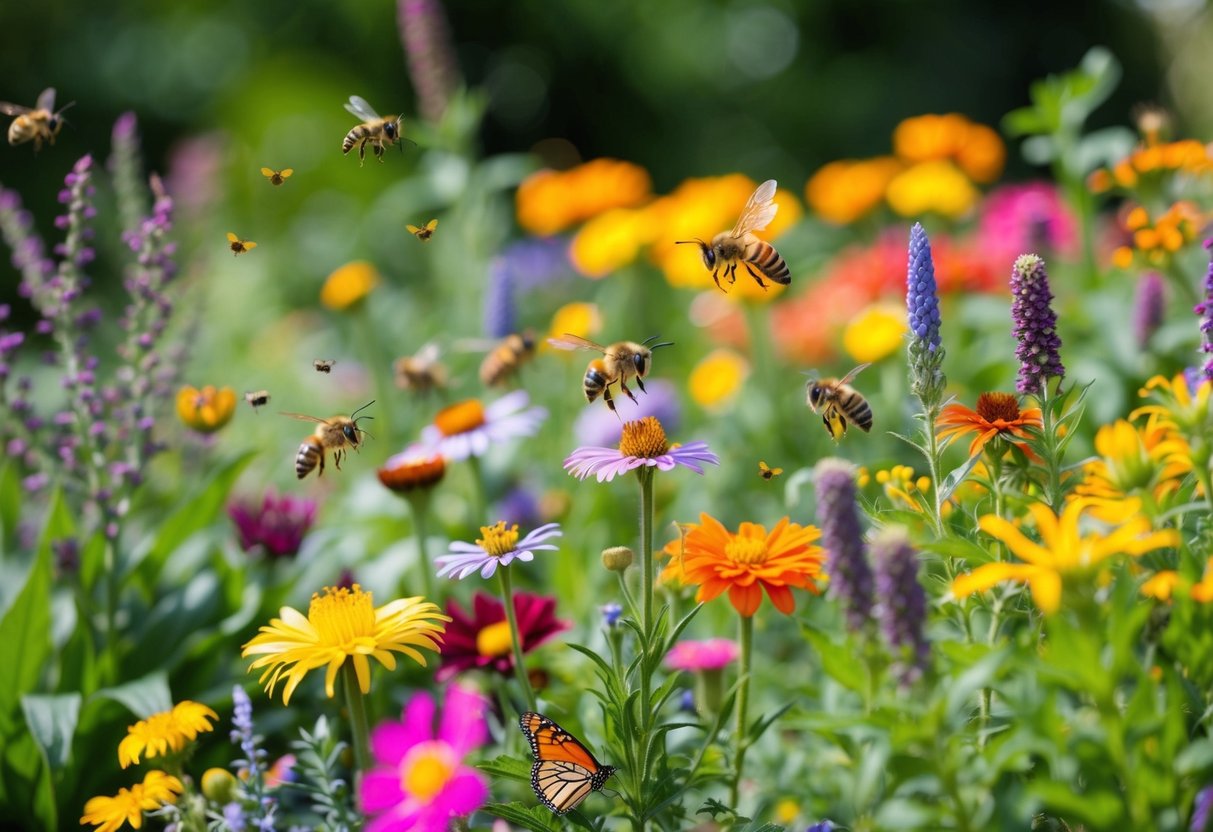
Moths and Other Beneficial Insects
Moths might not have the fame of butterflies, yet they are crucial pollinators, particularly for night-blooming plants. They are often attracted to white or pale flowers, which are easier to spot in dim light. Their nocturnal nature makes them important for evening pollination.
Incorporating plants such as evening primrose and moonflower can attract moths and other beneficial insects. These creatures also include beetles and flies, which carry out overlooked yet vital pollination duties. Ensuring a balanced ecosystem can help gardens flourish by hosting a variety of beneficial insects that support each other.
Designing a Pollinator-Friendly Garden Layout
A well-designed pollinator-friendly garden layout involves strategic planting that optimizes sunlight exposure, incorporates native plants and wildflowers, and ensures a continuous bloom cycle throughout the growing season.
Understanding Sunlight and Planting for Proper Exposure
Sunlight plays a crucial role in a pollinator-friendly garden. Most flowering plants require between six to eight hours of sunlight daily for optimal blooming. When designing the garden, it’s essential to observe how sunlight moves across the area. This will help determine the best planting locations.
Plants should be grouped based on their light requirements. For example, sun-loving plants such as lavender and sunflowers should be placed in the brightest spots. Shade-tolerant plants like ferns and hostas can be positioned in areas with less direct sunlight.
Consider the height of plants and their potential to cast shadows on others. Taller plants should be planted toward the back of beds to prevent blocking light for shorter plants. This careful planning ensures that all plants receive the necessary sunlight for growth and flowering.
Incorporating Native Plants and Wildflowers
Incorporating native plants and wildflowers into the garden is beneficial for local pollinators. Native plants often require less maintenance and are more resilient to local pests and climate conditions. They provide a familiar habitat for native pollinators, ensuring better reproduction and survival rates.
Select plants that offer a variety of flower shapes, sizes, and colors to attract different types of pollinators. Examples include milkweed for monarchs, coneflowers for bees, and black-eyed susans for a wide array of insects.
Using local species helps support biodiversity and maintains the ecological balance. Wildflowers can be interspersed with other plants or planted in dedicated sections of the garden to create a vibrant and inviting landscape for pollinators.
Creating a Continuous Bloom Cycle
A continuous bloom cycle is essential to maintain a constant food source for pollinators throughout the season. This can be achieved by selecting a mix of plants that bloom at different times. Start with early spring bloomers like crocuses and daffodils, move to summer blooms like bee balm and cosmos, and end with autumn plants such as asters and goldenrod.
By staggering the bloom times, gardeners can ensure that there is always something in flower. This approach not only supports pollinators but also keeps the garden visually appealing. Regularly deadheading spent flowers encourages reblooming and helps maintain a prolific flowering cycle.
Selecting Plants for a Diverse Pollinator Diet

Creating a garden that supports pollinators involves selecting a variety of plants that offer nectar, pollen, and necessary growth conditions for caterpillars. The right combination of plant species increases the health and diversity of pollinator populations.
Nectar-Rich Flowering Varieties
Nectar is crucial for many pollinators, such as bees, butterflies, and hummingbirds. To provide abundant nectar, gardeners should consider planting flowers like coneflowers, milkweed, and sunflowers. Coneflowers are particularly favored by butterflies for their vibrant colors and generous nectar supply. Milkweed is essential for monarch butterflies, offering both nectar and habitat. Sunflowers also attract bees and birds, adding both functionality and beauty to a garden. Each plant can thrive in different growing conditions, so selecting a broad range will ensure continuous flowering and nectar availability throughout the growing season. Pollinators benefit immensely from a garden that maintains a consistent supply of nectar sources.